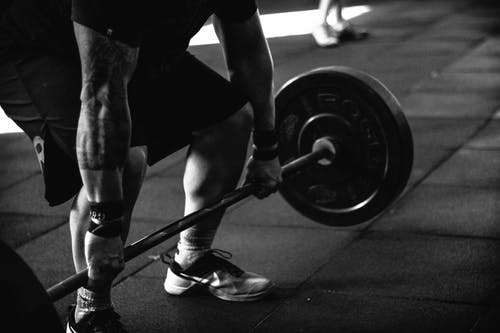The hamstrings, glutes, and lower back are an important chain of muscles for athletic performance. Not only are they important for performing movements that involve hip extension and knee flexion, but they are also important for preventing hamstring and non-contact ACL injuries.
Having said that, not all hamstring exercises are created equal. Athletes that are trying to improve performance or prevent injuries need hamstrings that are strong in the lengthened position. This means largely avoiding leg curl variations and focusing on exercises that train hip extension. This post is going to cover how to incorporate exercises on the field and in the weight room to put together a comprehensive hamstring program.
On the field:
On the field, exercises for the hamstrings should be part of a warm-up as well as part of a speed and agility training session. When it comes to the warm-up, I like to include variations of marches, straight leg bounds, high knee drills (with the knees lifted to a height that is greatly exaggerated), inchworms, and crabwalks. Normally I try to incorporate two to three of these exercises in a warm-up for sets of 20-40 meters.
During a speed and agility session, there are a number of exercises that can be incorporated to help the hamstrings. These include bounds, sled pushes/pulls, and partner-resisted sprinting over varying distances. The volume and distances should be equivalent to the training focus. For example, if we’re focusing on acceleration over 10 meters with our sprints then we don’t want to do bounds for sets of 100 meters.
In the weight room:
In the weight room, this can begin with the warm-up. This is a good time to address teaching the athlete how to land safely. We can perform jumps in place, where we focus on sticking the landings. We can also practicing dropping from heights and focusing on sticking the landings.
In terms of weight room exercises, most athletes should perform some type of squat. In the squat, the hamstrings flex the knee during the descent, but they also extend the hip during the ascent, so they get a workout during the squat. It’s also important to include a primary hip extension exercise like a deadlift, Romanian deadlift, or good morning. Other exercises like back raises or reverse hyperextensions can be used as supplementary exercises.
Below is a sample of both on-the-track programs and weight room programs that use the above.
| Focus | Workout |
| Warm-up | 400 meter jog
Leg swings: front/back, side/side Eagles/stomach eagles Hops on toes, 20 meters Marches, 3×20 meters Inchworms, 3×20 meters High knee walks, 2×20 meters Heel to hip, 2×20 meters A drills, 3×20 meters |
| Workout | Bounds, 3×10 meters
Standing starts, 3×10 meters Crouching starts, 3×10 meters Partner-resisted starts, 3×10 meters |
Table one: sample on-the-track workout incorporating hamstring training.
| Focus | Workout |
| Warm-up | Superset: Jump rope and kettlebell swings, 3x(30 seconds + 30 seconds)
Heavy rope slams, 60 seconds Squat jump, stick landing, 10x |
| Workout | Power clean, 3×3-6×60-70%
Clean pulls, 3×3-6×70-80% Back squats, 3×4-8×80-90% Romanian deadlifts, 3×4-8 Reverse hyperextensions, 3×15-20 |
Table two: sample weightroom workout incorporating hamstring training.




